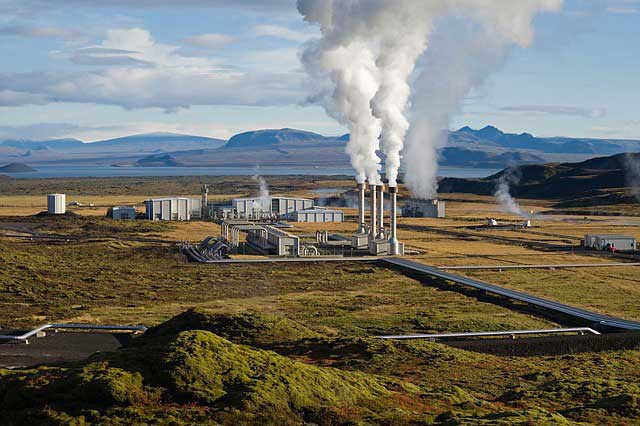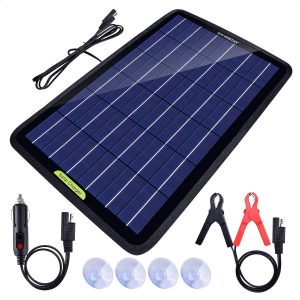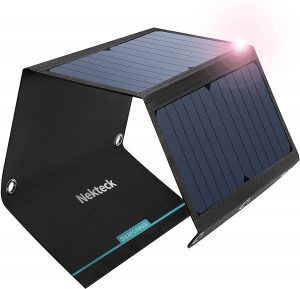A simple geothermal energy definition would be as follows: a renewable source of energy that is generated through the heat stored inside the Earth. Geothermal energy can be used to produce electrical power at industrial levels, as well as cooling and heating solutions in residential homes or commercial venues.
While in use for many years, geothermal energy is not as popular as other alternative sources of energy. If you are curious to know exactly how does geothermal energy work and what are its main advantages and disadvantages, read on.
Recommended Geothermal Reading
How Does Geothermal Energy Work?
The crust of the Earth consists of water, rocks, as well as a layer of hot magma, which is hot molten rock. The temperature that magma can reach is higher than the temperature measured on the sun’s surface.
Magma is therefore capable of generating huge amounts of energy which can be transformed into electricity. This is achievable with the help of drilling into the earth. The heat measured underground is used to heat water and turn it into steam. The resulting steam spins turbines placed above the ground, thus resulting in the generation of electricity used by consumers on the grid.
Geothermal energy is, therefore, a highly reliable and renewable source of energy that has close to zero polluting effects on the planet.
The Main Advantages Of Geothermal Energy
Geothermal energy is eco-friendly
This is due to the fact that the carbon footprint of geothermal power plants is kept to a minimal. On average, geothermal power plants release up to 99% less CO2 for every Mwh of electricity they can generate. While some polluting aspects can be associated with the generation of geothermal energy, they are too insignificant when compared to the use of fossil fuels.
Geothermal energy is sustainable and renewable
Geothermal reservoirs have 100% natural origins and they are also replenished in a natural way, which makes geothermal energy a renewable energy source. Geothermal energy is also considered sustainable since it is capable of sustaining its own rate of consumption, as opposed to conventional sources of energy like fossil fuels. It is predicted that the energy located in the Earth’s geothermal reservoirs to last billions of years.
Geothermal energy shows great potential
At a global level, the consumption of energy is of around 17 terawatts originating in both renewable and fossil sources of energy. The numbers might sound incredibly high, but there is, in fact, many times more energy than the energy stored inside the Earth.
In other words, large amounts of geothermal energy are hard to access or accessing it would costs to much. If we were to take a realistic look at the estimates regarding the potential of power plants based on geothermal energy, we would discover they vary between 0.035 and 2 TW.
At the moment, geothermal power plants located around the planet only deliver 12.7 gigawatts of electricity.
Geothermal energy is excellent for cooling and heating systems
In order for geo energy to generate electricity, it needs to use high water temperatures, usually at least 300°F to turn the turbines that are responsible for producing power. There is also a simpler way of using geothermal energy for cooling and heating with the help of smaller temperature differences between ground and surface.
Geothermal energy is stable
The power output of geothermal power plants that use reliable heat pump geothermal solutions can be predicted very accurately, which is not true for solar energy, for instance. These power plants can be used to effectively meet large demands for energy.
Disadvantages Of Geothermal Energy
Geothermal power plants could make the land less stable
There are a few examples of geothermal power plants that have triggered the land to sink in New Zealand and Germany. Plus, the risk of earthquakes is also increased when hydraulic fracturing is used for creating superior geothermal system power plants. In 2006, a geothermal power plant that was built in Switzerland caused an of earthquake of 3.4 on Richer.
Greenhouse gases are released in the atmosphere
This occurs because of the large amounts of greenhouse gases located just below Earth’s surface. Whenever deep geothermal energy is accessed and harnessed, a part of these greenhouse gases will reach the surface and the atmosphere. The respective gas emissions are higher nearby power plants that use geothermal energy.
The same plants are also known to generate small solphur dioxide emissions, as well as silica emissions. It is also possible for geothermal reservoirs to trap mercury, boron, arsenic, and other kids of harmful heavy metals.
Nonetheless, the amount of pollution that is triggered by geothermal power plants is still extremely low, and only about a fraction of the pollution caused by fossil fuel and coal burning. Moreover, there have are no reports of water contamination problems from these geothermal reservoirs.
Geothermal energy plants are expensive
Building and running geothermal projects for commercial uses costs a lot of money, with installation costs easily $2.5 up to $5 million for a single power plant that can generate one megawatt. Plus, drilling and further exploration activities also add more to the costs.
Geothermal reservoirs can be difficult to identify
A reliable geothermal reservoirs can be hard to come across, and having to transport this type of energy long distances using hot water means dealing with serious energy losses.
Types Of Geo Energy Systems
Geothermal systems come in a number of systems, and choosing one will ultimately depend on a number of elements, including the climate, the soil conditions, or the land that is available.
Generally speaking, there are two main types of ground loop systems: open loop systems and closed loop systems.
Open loop systems are divided into standing well and pond systems. Close loop systems are divided into vertical, horizontal, and pond systems. The main differences between them consist of the way geothermal heat pumps are installed, as well as the structure of the and and the land’s surface.
Geothermal Energy – Clean, But Expensive
As a final conclusion, we could mention the fact that while geothermal energy is considered clean, renewable, sustainable, and environmentally friendly, it also triggers some huge upfront costs that are difficult to cover in most parts of the world, which means its full potential it yet to be achieved.



